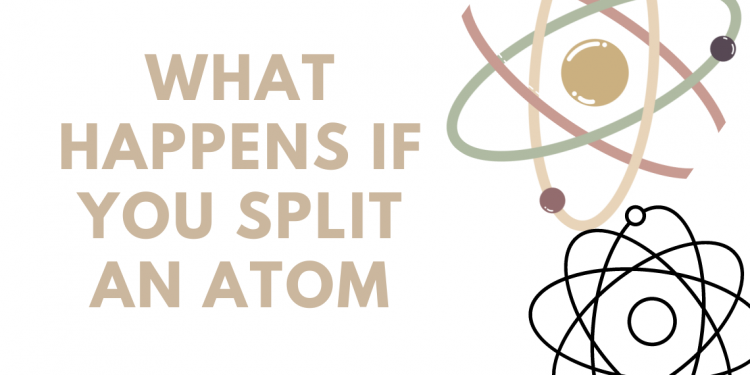Ever since the last two decades, the impossible has literally spelled out ‘I am possible’ as humans have made discoveries and inventions that once seemed like a distant dream. Outer space is travelable now. Stars and their composition are no longer a mystery. Marine life deep within the ocean has been found and named, as well as studied in detail. There also came a time when cars running on water instead of fuel were invented, which were banned shortly after. All thanks to this, the theory of a flying car in the near future doesn’t seem surprising anymore. What happens if you split an atom.
Just like that, the atom was said to be the smallest particle to exist in the world, which according to earlier scientists, could not be split. But of course, science had to prove that wrong as well, and now sub-particles existing within an atom have been discovered and listed in journals.
Does an explosion occur that will kill you at the spot, or is a human incapable of doing so in the first place? Read to find out.
What is an atom and What is it made of?
An atom is the smallest unit of matter. It consists of a nucleus at its center that is surrounded by one or more negatively charged particles we call electrons. Within the nucleus consists a number of protons and neutrons that make the nucleus neutral i.e., neither positively nor negatively charged. Forming chemical elements and much more, atoms are considered as the building blocks of all matter.
What are protons and neutrons?
As the name indicates, a proton is a positively charged particle. The atomic number of an element is defined by the number of protons within that element.
The neutron is a neutral particle having no charge. They may or may not exceed the number of protons present in a neutron. The atomic number of an element is defined as (the total number of protons + the total number of neutrons) present in an element.
Charge of an atom
By default, an atom is neutral and contains no charge. However, if an atom loses an electron, it becomes positively charged. Similarly, if an atom gains an additional electron, it becomes negatively charged.
Can you split an atom?
If you want to see what is inside, you will have to split the atom into either two equal or different parts. There are several ways to do so, which include the following:
- Bombarding radioactive isotopes
- Compressive radioactive materials
- Using a laser to split the atom
What happens if you split atom? The most commonly used method is the first one.
What happens if you split an atom?
Before we dive into this part of the article, imagine yourself inside an atom. Then this is what you are most likely to see.
The nucleons (protons and neutrons) are held together tightly to the nucleus by a force called the binding force. If you put a strain on the nucleus by using the methods mentioned above or a different method, the nucleus becomes weak and hence, the nucleus splits. Keep in mind we imagined the splitting of a nucleus, not an atom just yet. After a nucleus is weakened, it is bombarded with a neutron traveling at high speed. This is another method of splitting a nucleus by releasing energy which we call the fission reaction.
What is a fission reaction?
Imagine yourself inside an atom once again. A radioactive atom emits radiation energy. This energy is released when the number of protons and neutrons gets imbalanced. This unbalanced atom attempts to rebalance itself by releasing radiation energy.
Radiation energy released during a fission reaction isn’t that strong and large if considered of a single atom. However, there are stray neutrons present that results in the splitting of another atom, then another, and so on. This little energy released by each atom combines to form an extremely large energy release, which we call a nuclear explosion. The same technique was used in 1945 on Hiroshima and Nagasaki which brought a lifetime of doom to the residents.
The size of an atom matters a lot
Although the general rule of thumb applies to all atoms, the amount of energy released and the energy needed to split an atom greatly depends on the size of an atom.
Theoretically, the larger the atom, the larger will be the nucleus, and the easier will it be to split. Controversially, the smaller an atom, the smaller will be the nuclei, and more energy will be needed to split it into two parts. Keep in mind that the nucleus we are splitting may or not be halved.
Examples
A few examples of atoms that are split by nuclear fission are:
- Uranium (split into krypton and barium)
- Iron
Conclusion
This may sound like an easy and fun way to produce energy, but remember that isotopes, radioactive energy, and especially nuclear fission reactions are nothing to joke around about. They destroyed a whole nation, they can do more now that you know about it. However, if you keep on studying and unraveling the secrets of an atom, you might find something to benefit humankind with.












